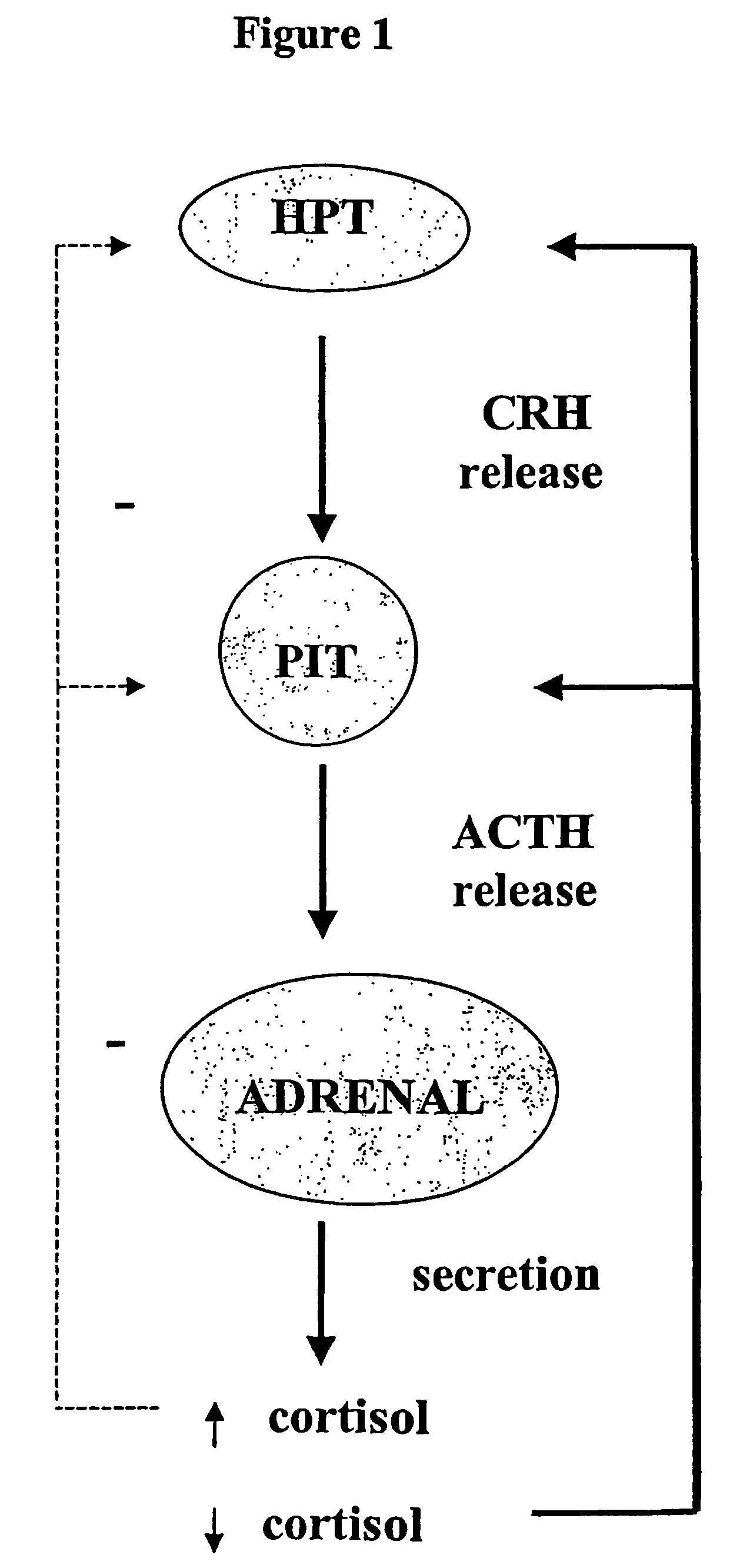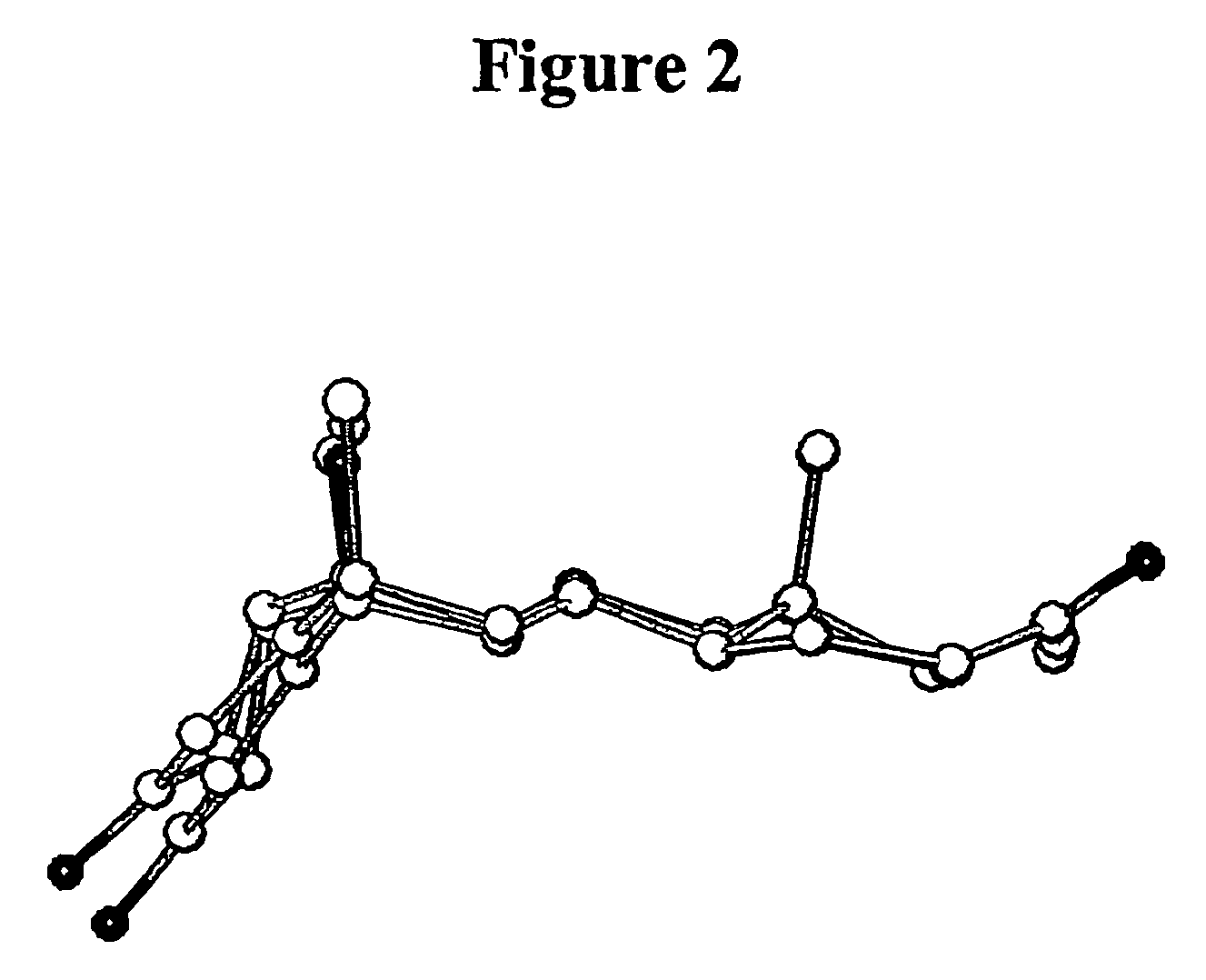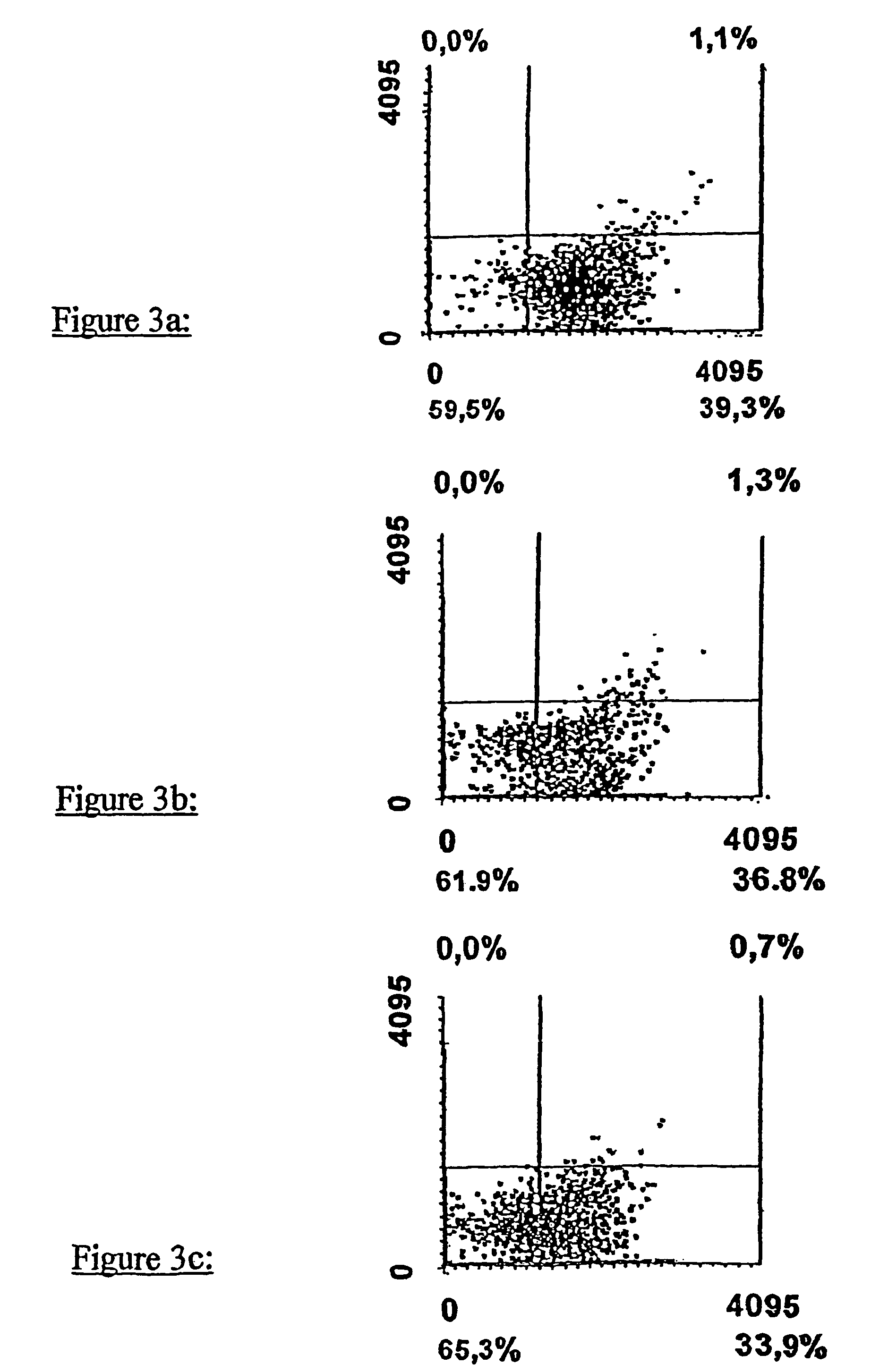Sulphur analogues of 21-hydroxy-6,19-oxidoprogesterone (21OH-6OP) for treating excess of glucocorticoids
a technology of glucocorticoids and analogues, which is applied in the field of sulphur analogues of 21-hydroxy-6,19-oxidoprogesterone (21oh6op) for treating excess glucocorticoids, can solve the problems of atrophic skin, muscle wasting and weakness, and difficult visualization of micro-adenomas
- Summary
- Abstract
- Description
- Claims
- Application Information
AI Technical Summary
Benefits of technology
Problems solved by technology
Method used
Image
Examples
example 1
3β-Formyloxy-21-acetyloxy-5-pregnen-20-one (14a)
[0099]Acetic anhydride (13.4 ml) is added dropwise to formic acid (6.6 ml) at 0° C., the solution is heated at 50° C. for 15 min and cooled rapidly to 0° C. The resulting acetoformic anhydride solution is added dropwise to a stirred suspension of 21-acetoxypregnenolone (commercially available, 8.0 g) in dry pyridine (20.8 ml) at 0° C., and stirring is continued at that temperature for 2 h. The reaction is poured over cold saturated aqueous sodium bicarbonate solution, filtered and the solid is washed with saturated aqueous sodium bicarbonate solution, water and 1N HCl and water (until neutral) to afford the formate title compound (8.0 g); 1H NMR (200.13 MHz) δH 0.70 (3H, s, 13-CH3), 1.02 (3H, s, 10-CH3), 2.16 (3H, s, 21-CH3CO), 2.53 (1H, t, J=8.0 Hz, 17-H), 4.50 (1H, d, J=17.0 Hz, 21a-H), 4.70 (1H, d, J=17.0 Hz, 21b-H), 5.32 (1H, m, 3-H), 5.38 (1H, d, J=3.0 Hz, 6-H), 8.02 (1H, s, HCOO).
example 2
3β-Formyloxy-5α-bromo-6β-hydroxy-21-acetyloxypregnan-20-one (14b)
[0100]Formate 14a (8.0 g), is dissolved in diethyl ether (100 ml) and THF (37.2 ml) and cooled to 10° C. To the stirred solution at 10-15° C. which protected from light −7.5% perchloric acid (11.88 ml) is added, followed by N-bromoacetamide (4.75 g) in 8 portions over a 25 min period. Stirring is continued for 45 min at 25° C. and the reaction is stopped by addition of 10% aqueous sodium thiosulfate solution until complete decoloration. The reaction mixture is then extracted with dichloromethane / methanol 10:1 and the organic layer, is washed with water, dried with anhydrous sodium sulfate and the solvent is evaporated to afford bromo-hydrin 14a (10.4 g, containing about 20% of the 5α-hydroxy-6β-bromo isomer as determined by 1H NMR).
example 3
3β-Formyloxy-5α-bromo-21-acetyloxy-6,19-oxidopregnan-20-one (14c)
[0101]Nitrogen is bubbled for 5 min through a solution of bromohydrin compound 14b (10.4 g, containing about 20% of the 5α-hydroxy-6β-bromo isomer) in freshly distilled dichloro-methane (723 ml) contained in a 1 liter glass vessel fitted with an external cooling jacket with circulating water at 25° C. and magnetic stirrer. Diacetoxyiodobenzene (Suarez reagent, 7.66 g) and iodine (5.46 g) are successively added with stirring. The vessel is exposed to two 300 Watt tungsten lamps (5000 lm each) and vigorous stirring is continued for 1 h at 25° C. Irradiation is turned off and a saturated aqueous solution of sodium thiosulfate is added until complete decoloration. The organic layer is separated, dried with anhydrous sodium sulfate and the solvent evaporated. The resulting solid is dissolved in dichloro-methane (8 ml) and applied to a silicagel G-60 column (12 cm diameter×8 cm height) previously flushed with hexane; success...
PUM
 Login to View More
Login to View More Abstract
Description
Claims
Application Information
 Login to View More
Login to View More - R&D
- Intellectual Property
- Life Sciences
- Materials
- Tech Scout
- Unparalleled Data Quality
- Higher Quality Content
- 60% Fewer Hallucinations
Browse by: Latest US Patents, China's latest patents, Technical Efficacy Thesaurus, Application Domain, Technology Topic, Popular Technical Reports.
© 2025 PatSnap. All rights reserved.Legal|Privacy policy|Modern Slavery Act Transparency Statement|Sitemap|About US| Contact US: help@patsnap.com



